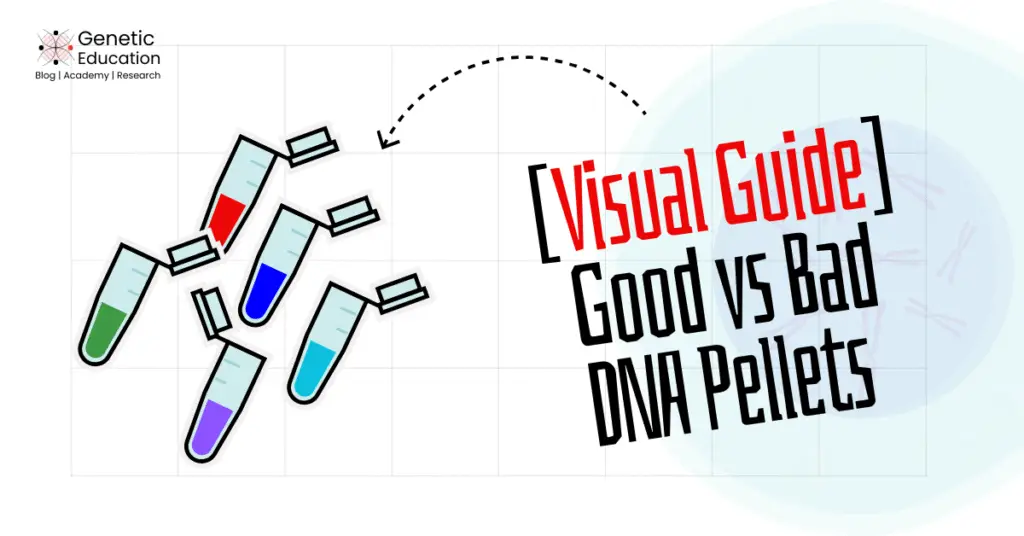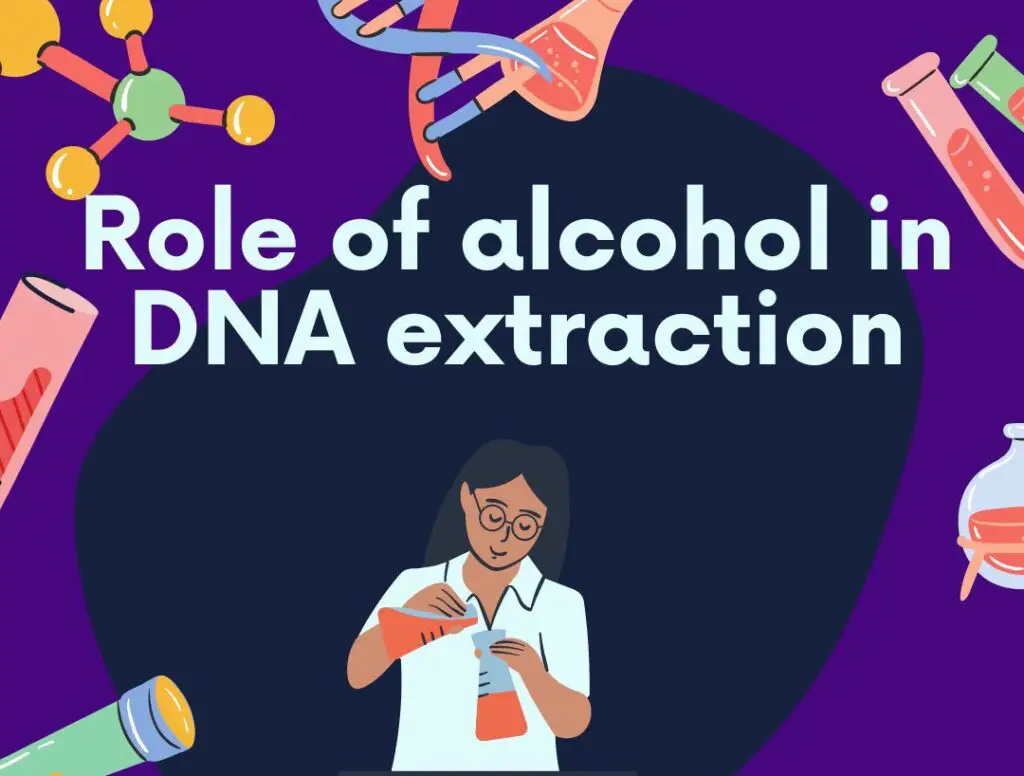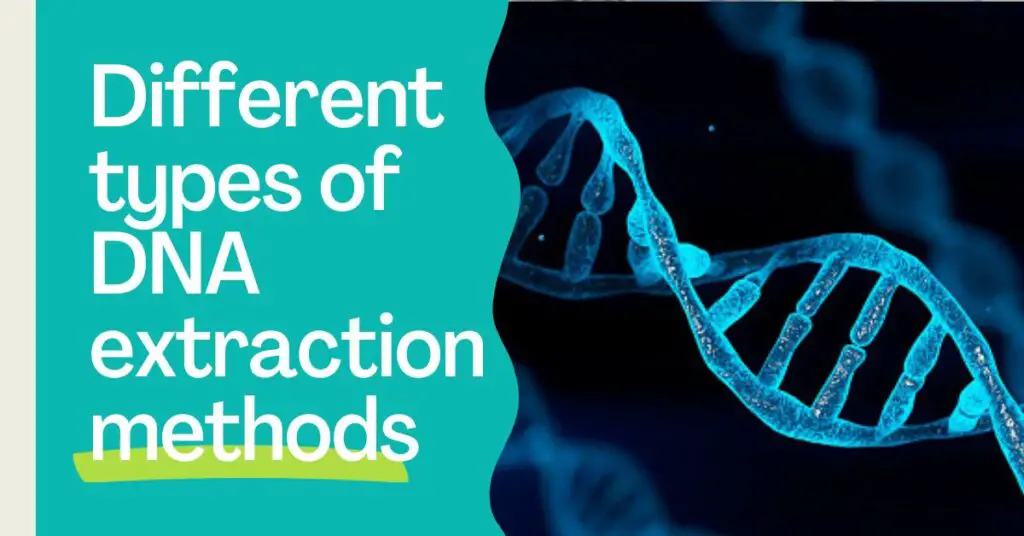“Do you know what the good vs bad DNA pellets look like during precipitation? Check out this visual guide to learn what each pellet appearance means for DNA quality.”
DNA precipitation is a crucial step during DNA extraction. Two common problems peers face during precipitation are that DNA pellets won’t dissolve or appear.
The previous article covered the common problems and troubleshooting about what if your DNA pellet won’t dissolve. However, students still struggle with their DNA pellet, thereby quality and yield of DNA.
So I came up with an amazing idea for a visual guide! Why not to discuss the actual/ real cases or examples of DNA pellets? I collected pictures of DNA pellets from fellow colleagues, other students and from the internet.
What we will do is, we will look after each type of DNA pellet, try to observe and interpret, if they are good enough or not! This ultimately will help you to study your pellets.
Sounds crazy! Let’s start.
Key Topics:
What Good vs Bad DNA Pellets Look Like?
I have chosen 8 different cases of DNA pellets. We will discuss each case one after another.
Case 1: DNA pellet with bubbles
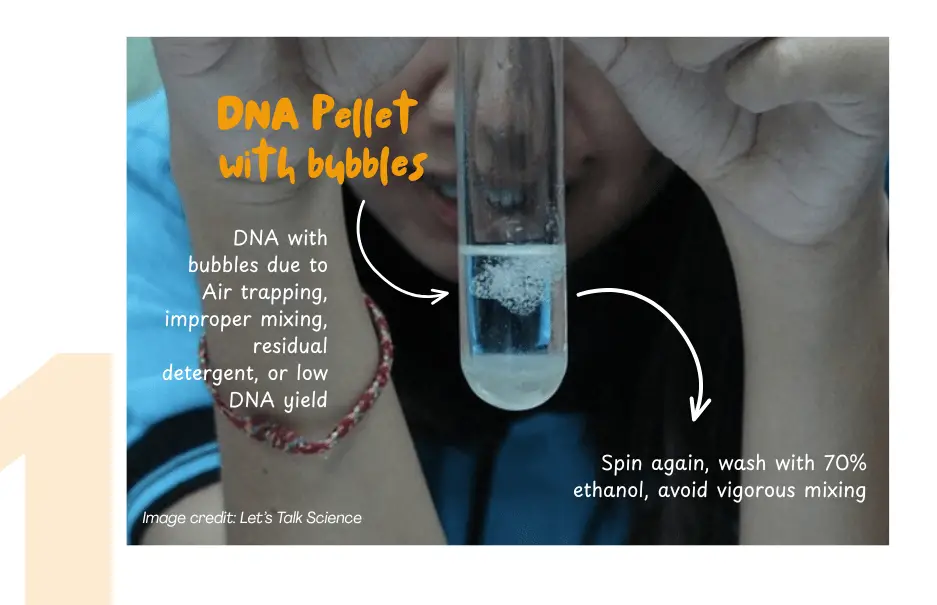
Now, this image looks pretty decent to students. And it is! Undoubtedly, the extraction is amazing, but it has a serious problem, the bubbles.
If you carefully observe the image, the pellet is trapped with the air bubbles. Is it a problem? Yes, it is!
Here, the most common possible reasons are air trapped during extraction, incomplete precipitation using ethanol or isopropanol, or due to contaminants. In addition, detergents like SDS or CTAB, or organic compounds like phenol, if they remain, form a bubbly layer, which is visible here, clearly.
Now, how to fix it.
First, mix it well to check if it is completely precipitated or not. Avoid vigorous mixing, and wash it properly in the next step. Users can even use chilled ethanol for better results.
Final verdict: A decent type of DNA pellet (Not so good and not too bad!). DNA can be recovered for down stream analysis.
Case 2: Pellet on the bottom
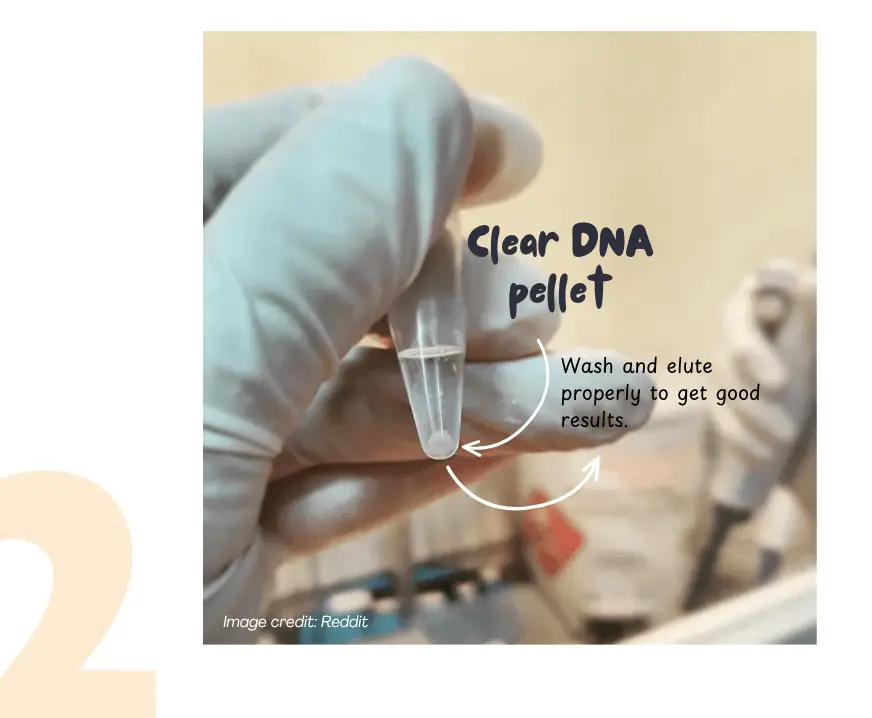
First, this image is captured not during the precipitation but after washing, however, the DNA pellet is crystal clear, white, compact, round in shape and have a decent quantity.
No need to do any fancy things! By just completing three ethanol washing and dissolving it into a TE buffer, good DNA results can be obtained.
Final verdict: Yes, DNA pellet is good and can be used in downstream analysis.
Case 3: Greenish DNA pellet

These pellets are belong the plant sample. It clearly shows the plant residuals, secondary metabolites or polyphenolic plant compounds. Usually, plant DNA extraction is a difficult task due to these compounds that we listed.
In addition, It is important to know that the protocol may also vary from plant species to species and thus, peers need sheer experience, good DNA extraction hands and lab preparation to extract pure DNA from any plant sample.
A few washing steps can be performed, but I don’t think that pure DNA can be recovered from this sample. So this sample fails and the pellets are bad.
Final verdict: The DNA pellets are bad.
Case 4: Cloudy greenish pellet
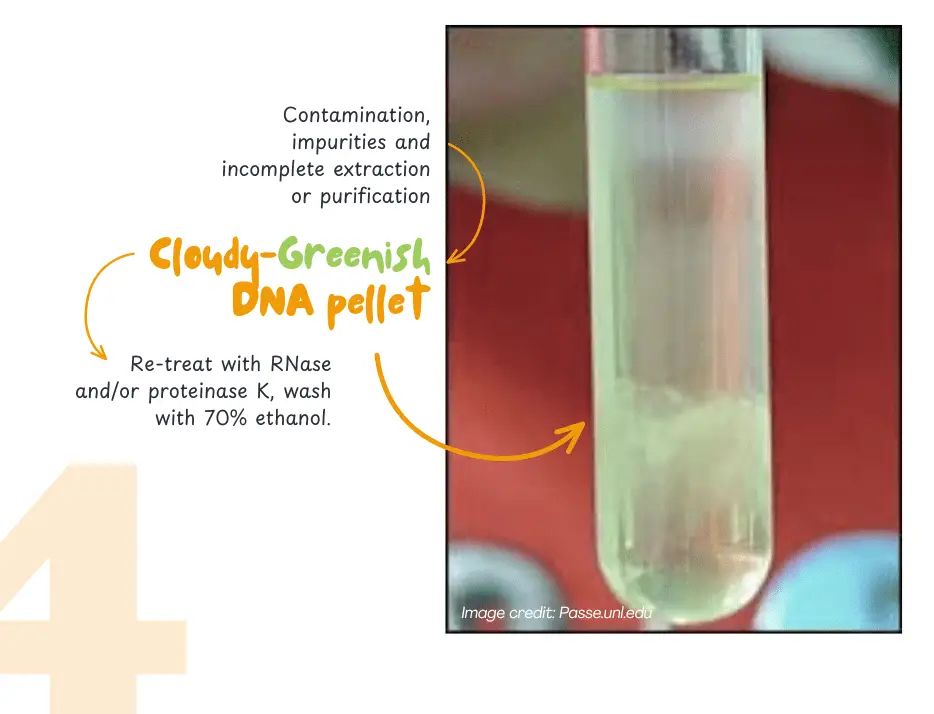
This DNA pellet also belongs to the plant sample, because it looks greenish, however, it might have phenol contamination, but phenol contamination is slightly yellowish, as phenol looks yellow.
This is a cloudy, unclear, greenish and messy DNA pellet. It clearly shows that
- The tissue preparation is not good.
- The sample is not treated well with the lysis solution, proteinase K or RNase.
- The DNA isn’t separated well and hence, isn’t precipitated completely.
The possible solutions are treating the sample again with a good quality lysis buffer, proteinase K and RNase, then re-precipitating it using 70% chilled alcohol.
This sample can’t be directly used for downstream analysis, as it is of very poor quality DNA pellet.
Final verdict: poor quality DNA pellet.
Case 5: Clear white pellet
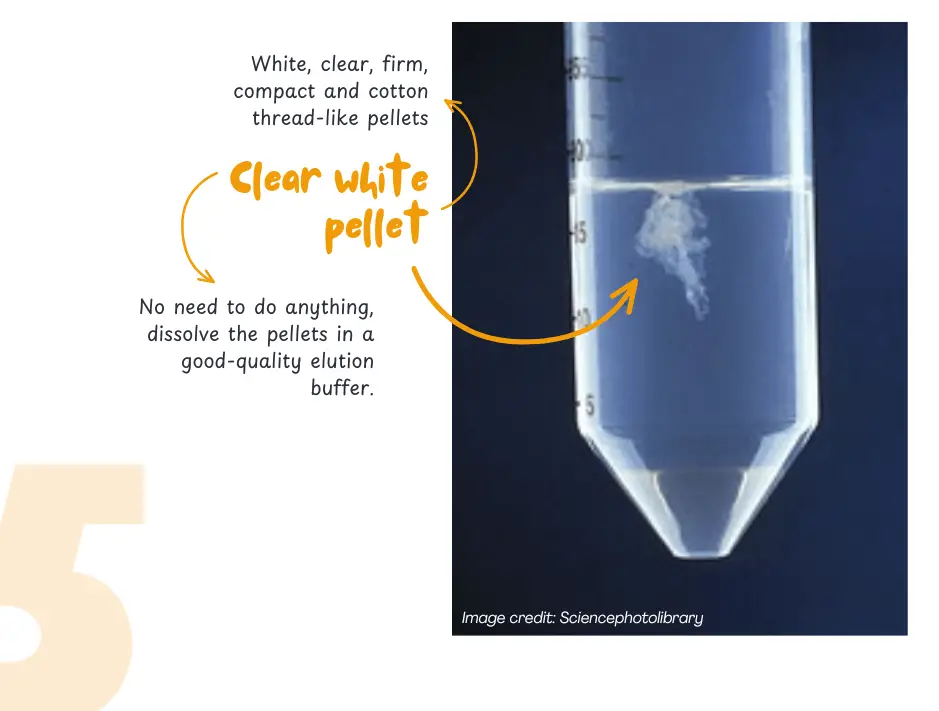
This DNA pellet is clear, white, firm, compact and solid. No air bubbles, any color stains or impurities appear in the pellet. This is a very good DNA extraction. No need to do anything special here.
Dissolving the pellet in a good-quality TE buffer can help to elute a good quality and yield DNA.
Final verdict: Good quality DNA pellet.
Case 6: Pinkish pellet
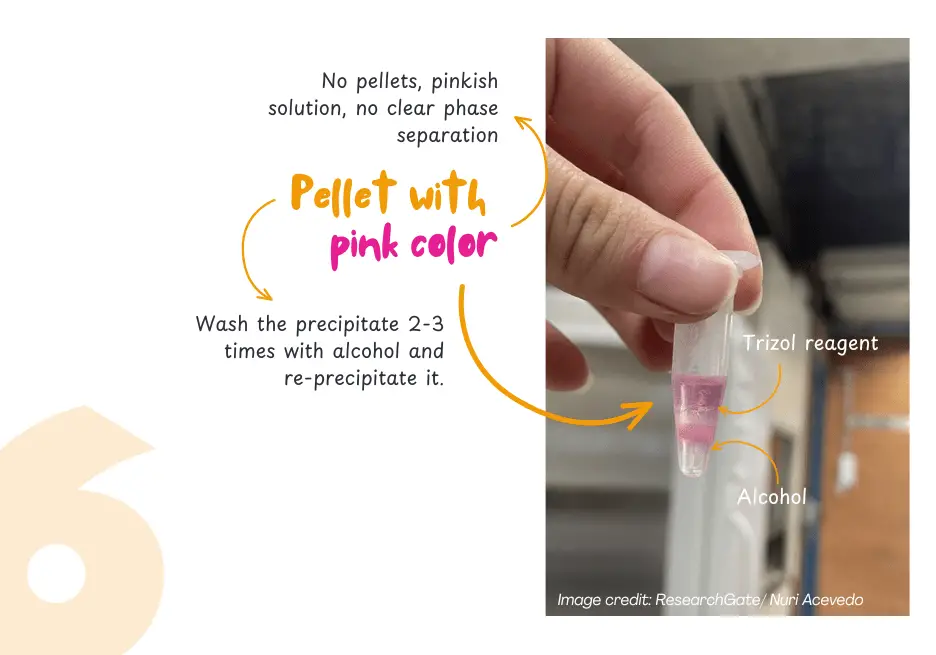
No pellet appear in the tube. The pinkish solution color indicates the use of TRIzol reagent, primarily used for RNA extraction, but can also be used for DNA extraction as well.
The lack of clear phase separation suggests that the DNA is not precipitated properly. In addition, the image also showed that a small amount of alcohol is added for DNA precipitation.
Washing the pellet 2-3 times with alcohol can recover the DNA. Even if the DNA pellet won’t appear; it still has the DNA and can be eluted.
Final verdict: No DNA pellet appear.
Case 7: pellet with a pink color solution
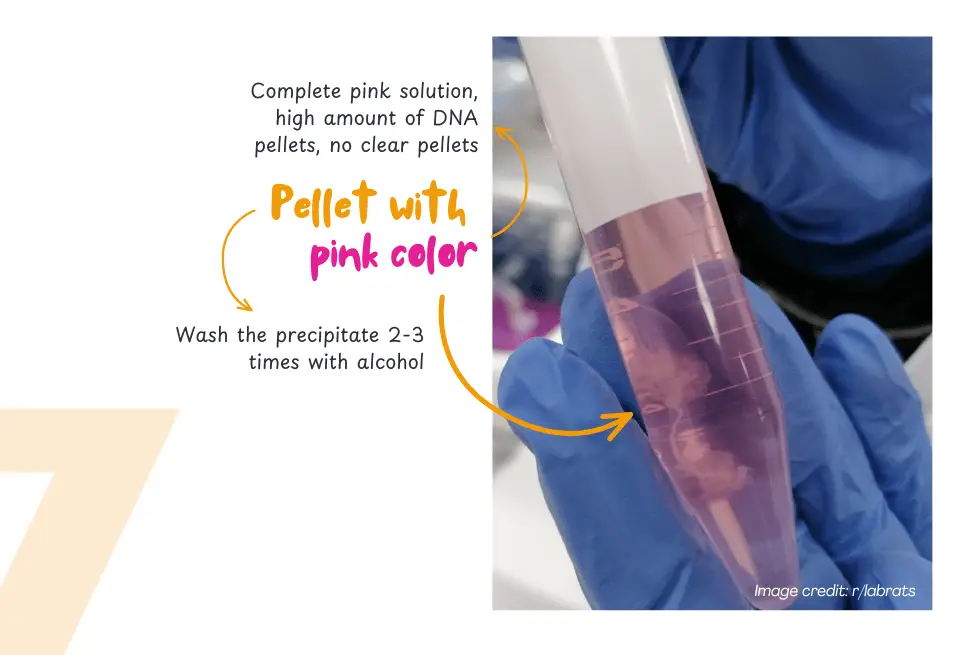
Another image of a DNA pellet with pink solution. However, the present case is a bit different. The sample is not treated with the TRIzol solution here. In addition, we observe a large amount of DNA pellets in the 15 ml Falcon tube.
So clearly it is ‘some school level’ experiment of the strawberry DNA extraction, and the pink solution color is because of the color of the strawberry, not the reagent or TRIzol.
The large amount of precipitates indicate improper lysis, leading to co-precipitation of contaminants along with the DNA. The pellet likely contains more than just DNA!
The sample needs to be processed through a well-established strawberry DNA extraction protocol to use it in downstream analysis.
Final verdict: Bad quality DNA precipitates.
Case 8: Clear DNA pellet
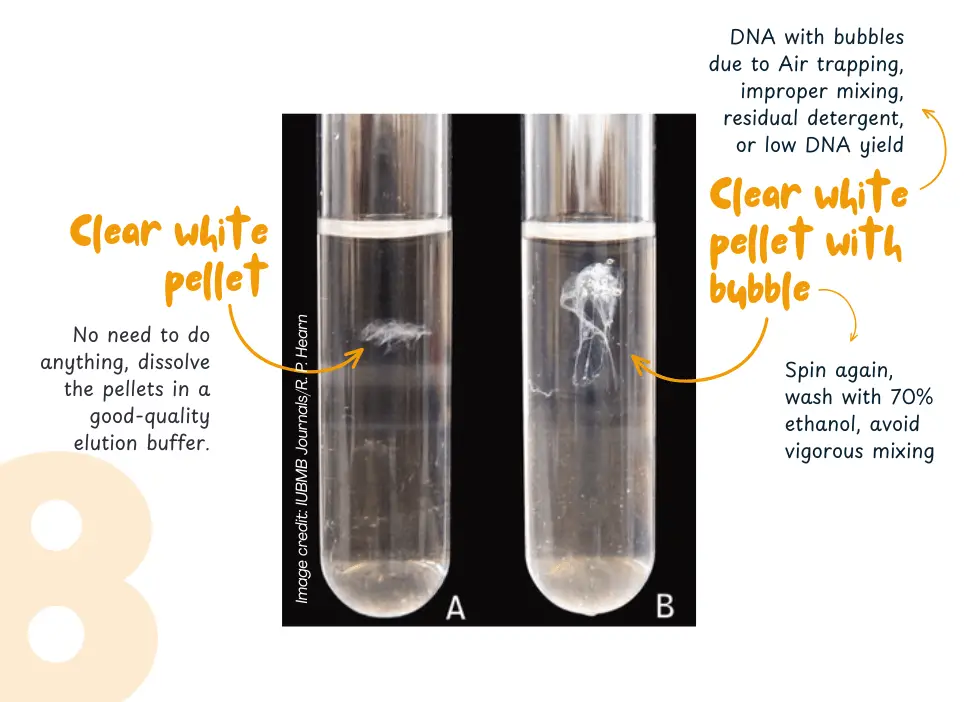
Here, we have two different types of DNA pellets. Both are clear, white, compact, clean and without any color stains. However, the second sample (B) contains several air bubbles inside the DNA.
Washing can remove these bubbles effectively. No need to do anything here.
Final verdict: Good quality DNA, can be used for downstream analysis.
Good vs bad quality DNA pellet:
So now, we are in the final part of this visual guide. Let me summarize the good and bad quality DNA precipitates in the form of a table.
| Feature | Good quality pellet | Bad quality pellet |
| Color | White or off-white | Yellow, greenish, or dark |
| clarity | Clear | Cloudy, milky |
| Texture | Firm, solid, compact | Sticky, greasy, or frothy |
| Shape | Tight, round or oval | Smudged, irregular, loose |
| Bubbles | None or very minimal | Floating, bubbly, or foamy |
| Stickiness | Sticks well to the tube wall or bottom | Floating or loosely attached |
| Smell (if observed) | Neutral or none | Strong chemical/phenol odor |
| Final verdict | High purity, no cleanup needed | Contaminated or poor-quality DNA |
Wrapping up:
This visual guide is available for download and can be used as a reference to evaluate and observe your DNA pellets
DNA extraction is a fundamental and crucial step in any genetic experiment, requiring precision and skills to perform well. Careful observation like this, can strengthen your skills and built expertise in the field of DNA extraction.
I’m sure, with this guide all your doubts regarding DNA precipitation and pellet are now clear. For more helpful content subscribe to Genetic Education for more such content.
